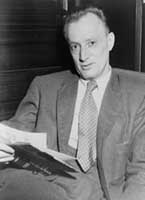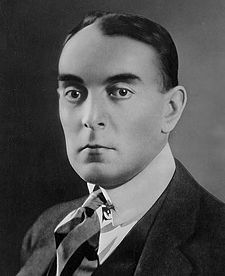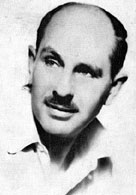
Richard Buckminster Fuller
Born: 1895 in Milton, Massachusetts
Pen Name: R. Buckminster Fuller, Richard Buckminster Fuller Connection to Illinois: Started a construction company in Chicago called the Stockade Building System. Fuller was also a research professor at Southern Illinois University in Carbondale, Illinois, in 1959. Biography: Richard Buckminster 'Bucky' Fuller was to become one of the most creative thinkers of the twentieth century. Fuller was schooled at the Milton Academy. During World War I he served briefly in the U.S. Navy.Fuller invented the stockade brick-laying method, which consisted of bricks reinforced with concrete poured into vertical holes in the bricks. He went to Chicago, where his mother originally lived, to start a construction company, the Stockade Building System. He also designed his the Dymaxion house. 'Dymaxion' was a term that Fuller used to refer to anything that derived maximum output from minimum material and effort. His 'house on a pole' was a self-contained unit suspended from a central mast and included a complete recycling system.He also designed the Dymaxion car, an omnidirectional vehicle that gave minimum resistance to the wind. The vehicle could seat 12 passengers, run at 120 mi per gallon, make 180 degree turns, and average 28 mi/gallon. Fuller's first real financial break came in 1940 with his Dymaxion Deployment Unit (DDU). This circular self-cooled living unit with pie-shaped rooms was made of corrugated steel. The British purchased DDUs for use in World War II. Before long, Fuller was shipping them all over the world.After the war, Fuller went on the lecture circuit and became quite a celebrity. He was appointed Dean at Black Mountain College in North Carolina in 1948, where he developed his Tensegrity Dome, which used tetrahedrons to balance the tension and integrity of the structure.After leaving Black Mountain in 1949, Fuller worked on his geodesic dome. That year, he constructed a model of the dome on the lawn of the Pentagon. Ford Company gave him his first major contract in 1953 to build a dome over the courtyard of the company headquarters in Detroit. The U.S. Defense Department became his largest customer, using his domes as temporary housing units and to house sensitive radar equipment in harsh environments.Fuller became a research professor at Southern Illinois University in Carbondale, Illinois, in 1959. He went on to propose domes for whole cities, like East St. Louis, to protect them from industrial smog. By the time of his death in 1983, Fuller's domes were in place worldwide, making Fuller's name well known.
Awards:
Selected Titles
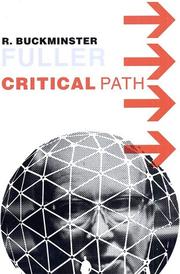 |
Critical path / ISBN: 0312174918 OCLC: 6735342 St. Martin's Press, New York : ©1981. "Critical Path traces the origins and evolution of humanity's social, political, and economic systems from the obscure mists of prehistory, through the development of the great political empires, to the vast international corporate and political systems that control our destiny today, to show how we got to the present situation and what options are available to man. With his customary brilliance, extraordinary energy, and unlimited devotion, Bucky Fuller shows how mankind can survive, while showing how each individual can respond to the unprecedented threat we face today"--Jacket. |
| Fuller's earth : ISBN: 0312309813 OCLC: 9971520 St. Martin's Press, New York : ©1984. |
|
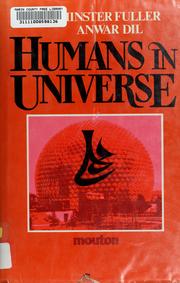 |
Humans in universe ISBN: 0899250017 OCLC: 9895499 Mouton, New York : ©1983. |
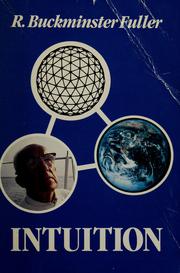 |
Intuition / ISBN: 0915166208 OCLC: 9441122 Impact Publishers, San Luis Obispo, Calif. : 1983. |
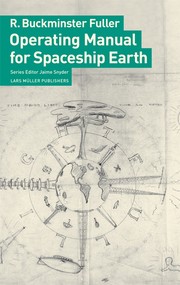 |
Operating manual for spaceship earth / ISBN: 3037781262 OCLC: 785823074 Lars Müller Publishers, Baden, Switzerland : 2008. "One of Fuller's most popular works, Operating Manual for Spaceship Earth, is a brilliant synthesis of his world view. In this very accessible volume, Fuller investigates the great challenges facing humanity. How will humanity survive? How does automation influence individualization? How can we utilize our resources more effectively to realize our potential to end poverty in this generation? He questions the concept of specialization, calls for a design revolution of innovation, and offers advice on how to guide "spaceship earth" toward a sustainable future."--Jacket. |
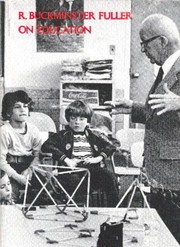 |
R. Buckminster Fuller on education / ISBN: 0870232045 OCLC: 4804874 University of Massachusetts Press, Amherst : 1979. |
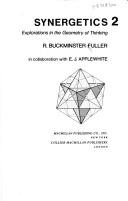 |
Synergetics 2 : ISBN: 0020926405 OCLC: 8827149 Macmillan ; New York : 1983, ©1979. |
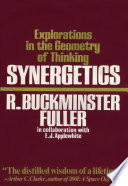 |
Synergetics : ISBN: 0020653204 OCLC: 466391071 Macmillan, New York : 1975. |
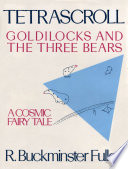 |
Tetrascroll : ISBN: 0312793626 OCLC: 8494470 ULAE/St. Martin's Press, New York, N.Y. : ©1982. |
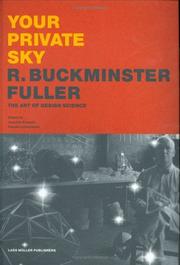 |
Your private sky : ISBN: 3907044886 OCLC: 50422671 L. Müller, Baden : ©1999. "As an engineer, a poet; as a designer, a philosopher; as a researcher, an artist - R. Buckminster Fuller established new standards. Convinced that specialists usually create more problems than they solve, he developed his concepts for a vision of the whole. In addition, in his unique way Fuller inter-linked the fields of architecture, geometry, engineering, natural science and anthropology. This book provides a highly multi-faceted insight into Fuller's world, also showing many of its up-to-now unknown sides."--Jacket. |
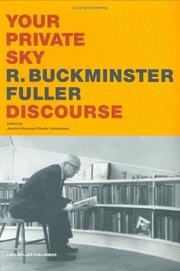 |
Your private sky : ISBN: 3907044940 OCLC: 47053331 Lars Müller ; Baden, Switzerland : ©2001. In this companion volume to the visual reader Your Private Sky: R. Buckminster Fuller; The Art of Design Science Fuller is heard primarily through his own writings, in which he expounded his world view and his ideas about design. Essays by other authors supplement and augment the selection of Fuller texts. The book collects important unpublished works and key texts that are not easily available, choosing from all phases of his creativity, and places them in the context of an art and science of design, in the sense implied in Fuller's term design science. The selection of texts provides access to Fuller's central concepts at the point they were first developed and presents them in their earliest valid formulation. The book thus affords a genuine look into his workshop of ideas. The volume includes texts that have become classics in the philosophy of design: Fuller's first essay, Lightful Houses, the lecture on his Dymaxion House, the first papers on synergetic geometry, and the tensegrity essay. The book also includes a facsimile of his previously unpublished basic text on the construction of geodesic domes, Noah's Ark #2.--Jacket. |


